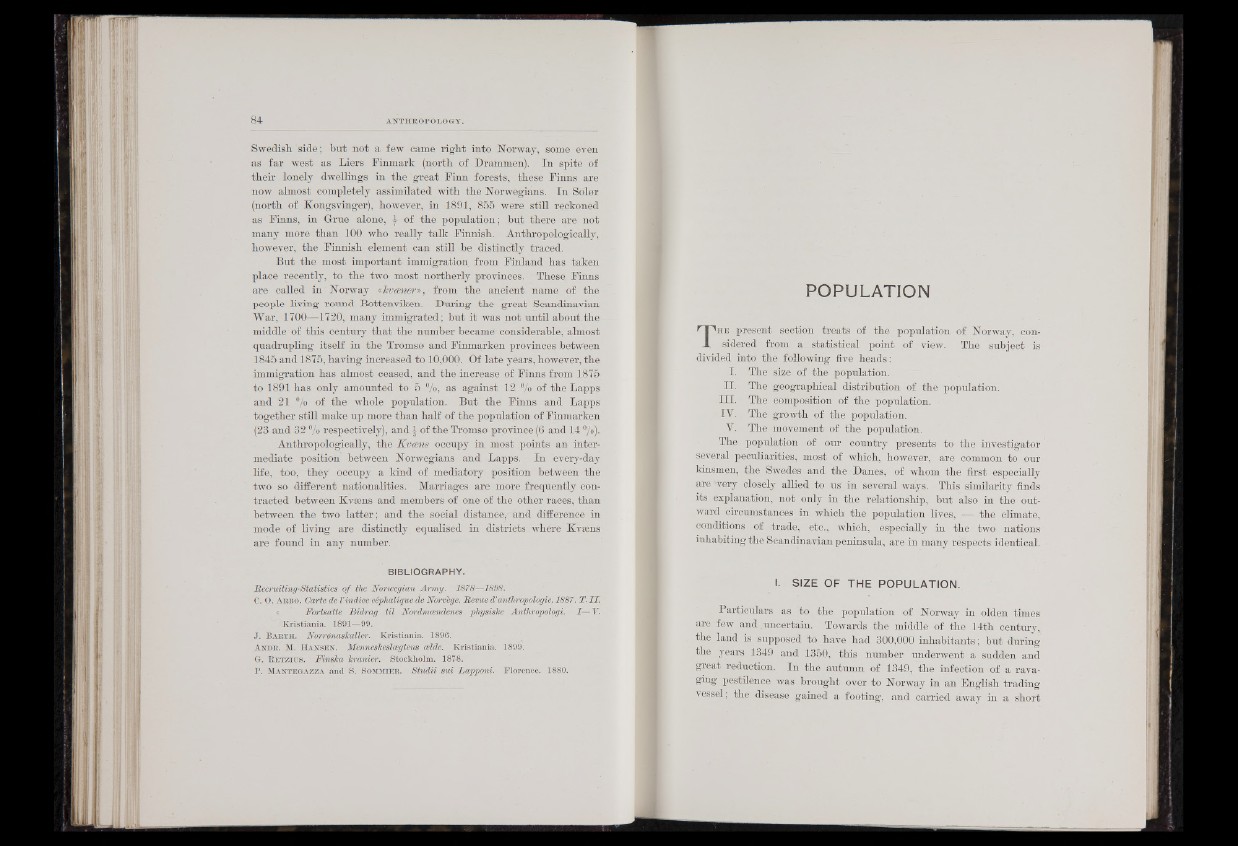
Swedish, side; but not a few came right into Norway, some even
as far west as Liers Finmark (north of Drammen). In spite of
their lonely dwellings in the great Finn forests, these Finns are
now almost completely assimilated with the Norwegians. In Solar
(north of Kongsvinger), however, in 1891, 855 were still reckoned
as Finns, in Grue alone, \ of the population; but there are not
many more than 100 who really talk Finnish. Anthropologically,
however, the Finnish element can still be distinctly traced.
But the most important immigration from Finland has taken
place recently, to the two most northerly provinces. These. Finns
are called in Norway «kvcener», from the ancient name of the
people living round Bottenviken. During the great Scandinavian
War, 1700—1720, many immigrated; but it was not until about.the
middle of this century that the number became considerable, almost
quadrupling itself in the Tromsa and Finmarken provinces between
1845 and 1875, having increased to 10,000. Of late years, however, the
immigration has almost ceased, and the increase of Films from 1875
to 1891 has only amounted to 5 °/o, as against 12 % of the Lapps
and 21 °/o of the whole population. But the Finns and Lapps
together still make up more than half of the population of Finmarken
(23 and 32 % respectively), and \ of the Tromso province (6 and 14 °/b).
Anthropologically, the Kvcens occupy in most points an intermediate
position between Norwegians and Lapps. In "every-day
life, too, they occupy a kind of mediatory position between the
two so different nationalities. Marriages are more frequently contracted
between Kvsens and members of one of the other races, than
between the two latter; and the social distance/ and diiference in
mode of living are distinctly equalised in districts where Kvsens
are found in any number.
BIBLIOGRAPHY.
Recruiting-Statistics o f the Norwegian Army. 1878—1898.
C. O. Ab b o . Carte de Vindice eiphalique de Noro'ege, Revue d'anthropologie, 1887. T. I I.
Fortsatte Bid/rag til Nordmoendenes physiske Anthropologi. I —V.
" ‘K risti ania. 1891—99.
J . B a b t h . Norr0nasJcaller. K ris tia u ia . 1896.
A n d b . M. H a n s e n . Menneskeslcegtens celde. Kristiania. 1899.
G. R e t z i u s . Fvheka hranier. Stockholm. 187-8.
P . M a n t e q a z z a a n d S. Sommxeb. Studii sui Lapponi. F lo ren c e . 1880.
POPULATION
Th e present section treats of the population of Norway, considered
from a statistical point of view. The subject is
divided into the following five heads:
I. The size of thé population.
II. The geographical distribution of the population.
III. T h ||’composition of the population.
IY. The growth of the population.
Y. The movement of the population.
The population of our country presents to the investigator
several peculiarities, most of which, however, are common to our
kinsmen, the Swedes and the Danes, of whom the first especially
are 'very closely allied to us' in several wavs. This similarity finds
its explanation, not only in the relationship, but also in the outward
circumstances in which the population lives, — the climate,
conditions of trade, etc., which, especially in the two nations
inhabiting the Scandinavian peninsula, are in many respects identical.
I. SIZE OF THE POPULATION.
Particulars as to the population, -of Norway in olden times
are few and .uncertain. Towards the middle of the 14th century,
the land is supposed to have had 300,000 inhabitants; but during
the years 1349 and 1350, this number underwent a sudden and
great reduction. In the autumn of 1349, the infection of a ravaging
pestilence was brought over to Norway in an English trading
vessel ; the disease gained a footing, and carried away in a. short